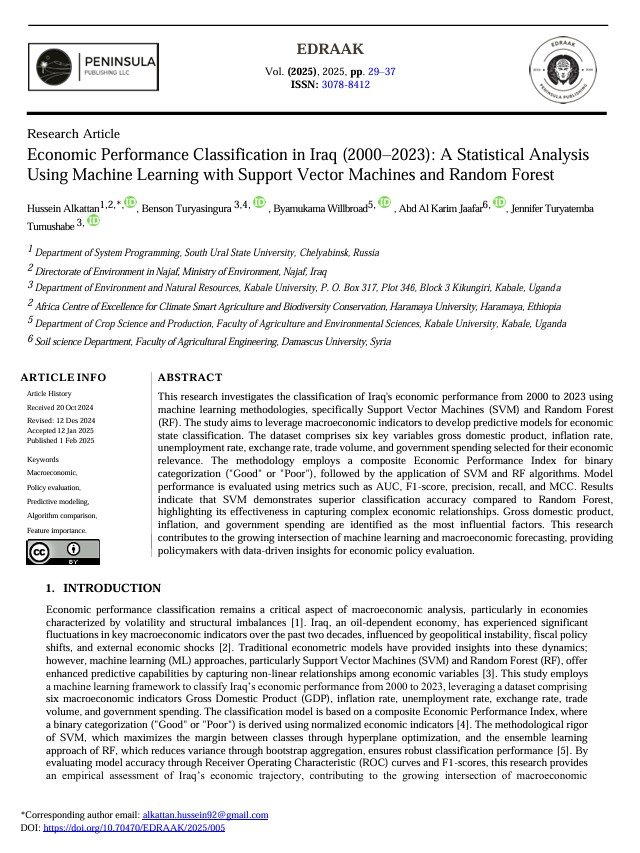Economic Performance Classification in Iraq (2000–2023): A Statistical Analysis Using Machine Learning with Support Vector Machines and Random Forest
Main Article Content
Abstract
This research investigates the classification of Iraq's economic performance from 2000 to 2023 using machine learning methodologies, specifically Support Vector Machines (SVM) and Random Forest (RF). The study aims to leverage macroeconomic indicators to develop predictive models for economic state classification. The dataset comprises six key variables gross domestic product, inflation rate, unemployment rate, exchange rate, trade volume, and government spending selected for their economic relevance. The methodology employs a composite Economic Performance Index for binary categorization ("Good" or "Poor"), followed by the application of SVM and RF algorithms. Model performance is evaluated using metrics such as AUC, F1-score, precision, recall, and MCC. Results indicate that SVM demonstrates superior classification accuracy compared to Random Forest, highlighting its effectiveness in capturing complex economic relationships. Gross domestic product, inflation, and government spending are identified as the most influential factors. This research contributes to the growing intersection of machine learning and macroeconomic forecasting, providing policymakers with data-driven insights for economic policy evaluation.
Article Details

This work is licensed under a Creative Commons Attribution 4.0 International License.
